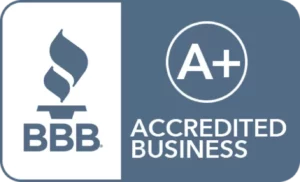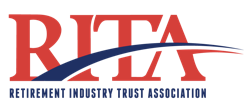The Solo 401(k)
The Solo 401(k) retirement plan, also known as the Self-Directed 401(k), is not a new type of plan. A Solo 401(k) is a plan that helps self-employed individuals and those who receive self-employment income. Small business owners with no full-time employees (excluding themselves, a spouse or business partner) can also take advantage of the plan.
A Solo 401(k) is an IRS-approved plan that is like an employer-sponsored 401(k), with all the same rules and requirements. A defining difference is that it only covers one employee.
Advantages of using the Solo 401(k) is that you can make higher contributions, invest in a world of assets, like real estate, and lend/borrow money. With the Solo 401(k), you can borrow 50% or $50,000 (whichever is less) from your account and use the money for any purpose.
Solo 401(k) Eligibility Requirements
With the Solo 401(k), there are only two eligibility requirements to establish the plan:
- You must be self-employed/generate self-employment income
- You cannot have full-time employees excluding yourself, a spouse who works in the business, and a business partner
The Solo 401(k) provides you with more control over your funds, all the benefits of a traditional 401(k), and additional benefits specific to the Solo 401(k) plan.
Additional Benefits of the Solo 401(k)
- The total annual contribution for a Self-Directed Solo 401(k) is $66,000 (under 50) in 2023 with two kinds of contributions:
- Employee salary deferral contribution: Employees can contribute up to $22,500
- Employer profit-sharing contribution: The annual limit is 25% of the employee’s pay, or 20% if you’re self-employed
- Catch-up contributions allow individuals 50 and older to contribute up to $73,500 to a Self-Directed Solo 401(k)
- You receive a penalty-free $50,000 loan that you can use for any purpose
- The plan is easy to administer and highly cost-effective
The Solo 401(k) has become highly popular among sole proprietors due to its many features. The primary advantage, however, is that retirement planners can reach their contribution limits faster.
Save More with Higher Contributions
A Solo 401(k) has high contribution limits, which is a primary benefit for self-employed and small business owners to establish this individual 401(k) plan. For 2023, you can make a maximum contribution of $66,000 if you’re under 50. If you’re over 50, the maximum contribution increases to $73,500. You are not required to make the maximum contribution for the Solo 401(k), but you cannot go over. Furthermore, you cannot defer more than you make.
As mentioned earlier, the Solo 401(k) contributions are broken down into two sections.
Employee Deferral Contribution
First, there is the employee contribution. As an employee, you can contribute up to $22,500 (dollar for dollar) if you’re under 50. Again, there’s a $7,500 increase if you’re over 50, which sets the maximum contribution at $30,000.
Profit Sharing Contribution
The second contribution type is the employer contribution, which is a percentage of your self-employment income. If you’re a C corporation, S corporation, W-2 or partnership, the contribution is 25% of your compensation.
You can make these contributions in pretax, after-tax or Roth.
Not Subject to ERISA
ERISA (Employee Retirement Income Security Act) is a set of laws created to protect employees under an employer-sponsored 401(k) retirement plan. In the 401(k) world, there was concern that owners and highly compensated employees would receive benefits, but not other employees.
ERISA has a complicated set of tests and regulations that they require employers to undergo to ensure their employees receive certain minimal benefits.
A Solo 401(k) is not subject to these rules because there are no full-time employees except for the owner, spouse and other business partners.
The Solo 401(k) is Affordable and Easy to Administer
The Solo 401(k) is attractive to many retirement investors because it’s an easy plan to administer. There are no filing requirements unless the account holds more than $250,000 in assets. If your account exceeds $250,000, you must file a short form called 5500-EZ, which you must send to the IRS (Internal Revenue Service).
Why Not Use an IRA?
The Solo 401(k) plan was created by the IRS specifically to aid the following individuals:
You can save more with a Solo 401(k) than you can with other retirement accounts for small business owners and self-employed individuals (ex., SEP IRA, SIMPLE IRA). Other reasons you should choose a Solo 401(k) over an IRA include:
No LLC: You do not need to establish an LLC (limited liability company), which can be costly depending on which state you live in.
Strong Creditor Protection: Most states offer better creditor protection for a 401(k) than an IRA. Solo 401(k) plans are also protected against creditor attack inside of bankruptcy.
Roth After-Tax Option: A Solo 401(k) allows you to make pretax and after-tax contributions. An IRA only allows you to make pretax contributions. The Roth option allows investors’ money to grow in their account tax-free, and the gains you generate are tax-free once you take a distribution.
Non-recourse Leverage Exception: You can make real estate investments and invest in your own business penalty-free. By using nonrecourse funds, you will not trigger the Unrelated Debt Financed Income rules (UDFI) and the Unrelated Business Taxable Income (UBTI). This exception does not apply to individual retirement accounts.
Compare Solo 401(k) & SEP IRA Contributions
Before the Economic Growth and Tax Relief Reconciliation Act (EGTRRA) of 2001, small business owners and individuals who earned self-employment income didn’t have a good reason to establish a 401(k). As a result, they opted for the SEP IRA, as it was simpler and provided the same benefits. When the EGTRRA Act became effective in 2002, it created a Solo 401(k) plan that was less complex and more tax-efficient than before.
Then EGTRRA gave more power to the Solo 401(k), offering an employee deferral feature (also known as the elective deferral contribution), along with its profit-sharing contribution. The elective-deferral contribution allows small business owners and self-employed individuals to set aside money from their paycheck, while the profit-sharing contribution allows the business to make a contribution. As a result, the Solo 401(k) allows investors to save more for retirement.
On the other hand, the SEP IRA is strictly a profit-sharing retirement plan. As a participant, you can only contribute a 25% profit-sharing contribution up to a maximum of $66,000 for 2023. A sole proprietorship or single member LLC can contribute 20%. There is no employee deferral feature.
More Investment Opportunities
Because a Solo 401(k) is a self-directed retirement plan for small business owners and individuals who are self-employed, you can invest in both alternative and traditional assets. When you self-direct your retirement plan, you can go beyond investing in stocks, bonds, and other traditional asset investments. You can invest in asset classes you truly understand, such as real estate, precious metals, or any asset that is IRS approved. As trustee of the plan, you can’t make any investment without custodian consent. All income and gains on the investments you make will go back to your Solo 401(k) plan tax-free.











